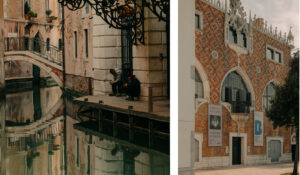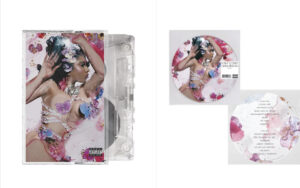Venice has long existed in a space somewhere between myth and masterpiece—a city so steeped in the illusions of history, romance, and decay that it has often seemed suspended in time. But something vital has shifted. Where once the art world descended only in curated waves—Biennale by Biennale, season by season—today’s Venice pulses year-round with creative life. Its fragile facades now conceal not only Renaissance treasures but also an emergent ecosystem of experimental galleries, private foundations, and permanent exhibition spaces. Art no longer arrives here in intervals; it inhabits the city. It breathes through the salt air.
To understand the transformation of Venice into a contemporary art capital, one must begin by acknowledging the enduring gravitational pull of the Venice Biennale. Since its founding in 1895, it has functioned not merely as a prestigious event, but as a ritual—a summit of cultural consensus where artists, critics, and curators alike convene to argue, celebrate, and proclaim. For over a century, this biennial rhythm set the tempo of the city’s contemporary relevance. The Architecture Biennale, launched in 1980 and alternating with the art exhibition in odd years, deepened the intellectual stakes, layering spatial and urbanistic discourse onto the canvas of the lagoon.
And yet, for much of that time, Venice remained episodic. It was a set piece rather than a stage. The palazzi hosting gallery soirées and dazzling pavilions would shutter soon after the crowds departed, their grandeur retreating behind heavy doors. Locals, meanwhile, were left to navigate a city more known for cruise-ship tourists and decaying glory than for sustained artistic vibrancy. Even the savvy art world often treated Venice as a transitory event—a glamorous exception rather than an embedded community.
That view no longer holds. Over the past decade, and accelerating rapidly in the last five years, Venice has undergone a remarkable metamorphosis. Art institutions, once content to stage seasonal shows, are now taking root. Historic spaces are being quietly, and sometimes dramatically, reimagined as year-round venues. New galleries, many of them experimental or artist-run, have emerged in districts as diverse as Dorsoduro, Castello, and Cannaregio. Venice, long at risk of cultural stagnation, is learning to live with art, not just host it.
From Transience to Permanence: The Institutional Turn
One of the clearest signs of this shift is the establishment of permanent contemporary art foundations within Venice’s built heritage. The Pinault Collection—perhaps the most high-profile—has become emblematic of this turn. French billionaire François Pinault’s renovation of the Punta della Dogana and Palazzo Grassi signaled more than just patronage; it introduced a sustained model of contemporary exhibition-making grounded in site specificity, architectural sensitivity, and local engagement. With rotating exhibitions from both canonical and emerging artists, these institutions function as counterweights to the Biennale’s spectacle, offering slower, more contemplative encounters.
Similarly, the Prada Foundation has utilized the 18th-century Ca’ Corner della Regina to stage exhibitions that reconfigure canonical narratives. The juxtaposition of its neoclassical opulence with boundary-pushing programming—from Jannis Kounellis to Theaster Gates—reinforces the notion that Venice’s historic grandeur is not a constraint but a provocation. These foundations do not simply bring art to Venice; they inscribe it into the very palimpsest of the city.
Yet the institutional expansion is not confined to marquee names. The Beatrice Bulgari Foundation’s recent unveiling of its In Between Art Film space, dedicated to moving image works, points to a broader pluralism in Venice’s art infrastructure. The foundation joins a growing list of entities committed to turning Venice into a platform not just for presentation, but for production, dialogue, and experimentation.
The Return of the Palazzo: Domestic Grandeur as Exhibition Form
One of the most intriguing aspects of Venice’s year-round transformation is the reappropriation of its palazzi as quasi-domestic exhibition spaces. Artists, collectors, and gallerists alike are rediscovering these storied buildings not only as romantic backdrops but as dramaturgical frameworks for curatorial invention. In many cases, the architecture imposes a necessary restraint—rooms with irregular dimensions, frescoed ceilings, and timeworn mosaics challenge the white cube’s neutrality and demand curatorial nuance.
This theatricality has been embraced by outfits such as Zuecca Projects, which occupies spaces like the Squero Castello (a former boatyard) to host interdisciplinary exhibitions with an eye to site and history. Similarly, the Berggruen Arts & Culture initiative, launched by collector Nicolas Berggruen in a 16th-century palazzo near Campo Santo Stefano, signals a renewed investment in salon-style intellectual life. These are not pop-up shows, but sustained commitments to cultivating creative communities within Venice’s lived fabric.
Palazzi, in this new chapter, serve less as symbols of elite nostalgia and more as testaments to continuity—their reanimation proving that history need not be embalming.
Venice as Studio: A Magnet for Artists-in-Residence
A further sign of the city’s reinvention lies in its growing role as a site of production. Once viewed as an improbable place to make work—too damp, too labyrinthine, too expensive—Venice is now drawing artists for long-term residencies, supported by both public and private initiatives.
One standout example is the Fondazione Giorgio Cini, located on the serene island of San Giorgio Maggiore. The foundation has evolved into a multifaceted cultural engine, offering residencies, research fellowships, and site-specific commissions. Meanwhile, the European Cultural Centre continues to expand its programming across multiple sites, hosting architecture and design exhibitions that have outgrown their Biennale origins.
The Venetian residency is now a coveted phase in an artist’s career—its constraints forcing creative ingenuity, its quietude offering escape from the market’s frantic churn. Here, art can be gestated rather than merely displayed.
Off the Grid: The Rise of Independent Spaces
While large institutions have helped re-anchor art in Venice, a simultaneous and equally vital current is unfolding at the grassroots level. Independent galleries and artist-run initiatives are reclaiming forgotten corners of the city with modest yet ambitious programming.
Take A Plus A Gallery, founded by curator Aurora Fonda, which has cultivated a reputation for rigorous contemporary shows in a space tucked away near Campo San Stefano. Or consider Spazio Ridotto, a compact yet inventive venue focusing on digital media. These spaces, often operating with lean budgets, are filling the intervals between major events, building an art public attuned to experimentation and intimacy.
Cannaregio and Castello, in particular, have emerged as fertile terrain for alternative art-making. Away from the over-trafficked paths of San Marco, these neighborhoods offer artists and curators the space—literal and figurative—to experiment. Here, the relationship between Venice and its creatives is less transactional, more symbiotic.
Venice as Metaphor: Living with Water, Living with Art
Why Venice, and why now? Part of the city’s current appeal lies in its paradoxes. It is both timeless and precarious, opulent and endangered. As climate change threatens its very existence, the idea of anchoring contemporary art here takes on existential urgency. To make art in Venice is to embrace fragility. To exhibit here is to acknowledge impermanence.
This fragility has become metaphorically potent for artists working across disciplines. Whether responding to themes of memory, erosion, displacement, or beauty, many find in Venice an unparalleled laboratory of affect. The city doesn’t merely host the work—it infiltrates it.
In this way, Venice has evolved from an event location into an artistic interlocutor. Its canals, bricks, and shadows converse with the work they frame, producing layered encounters that exceed spectacle.
Impression
The story of Venice’s art world transformation is still being written. It is an incremental, sometimes invisible process. It resists the binary of biennale hype versus tourist exhaustion. Instead, it suggests a third path: one where art integrates with daily life, with historic architecture, with geographic challenge.
No comments yet.









